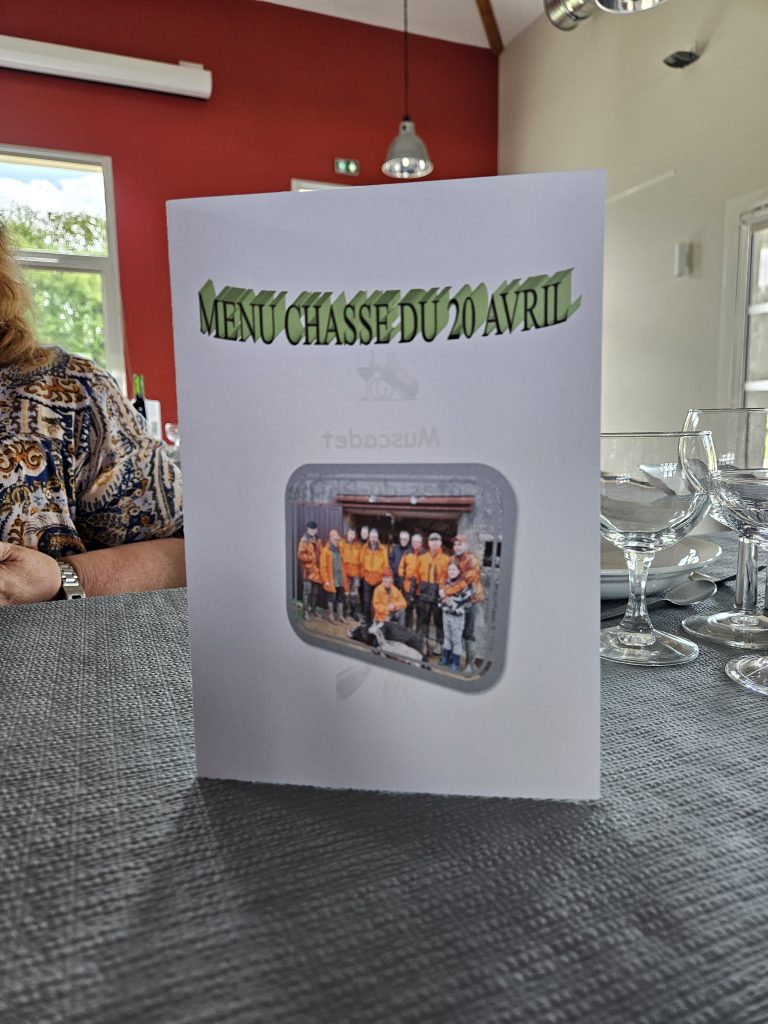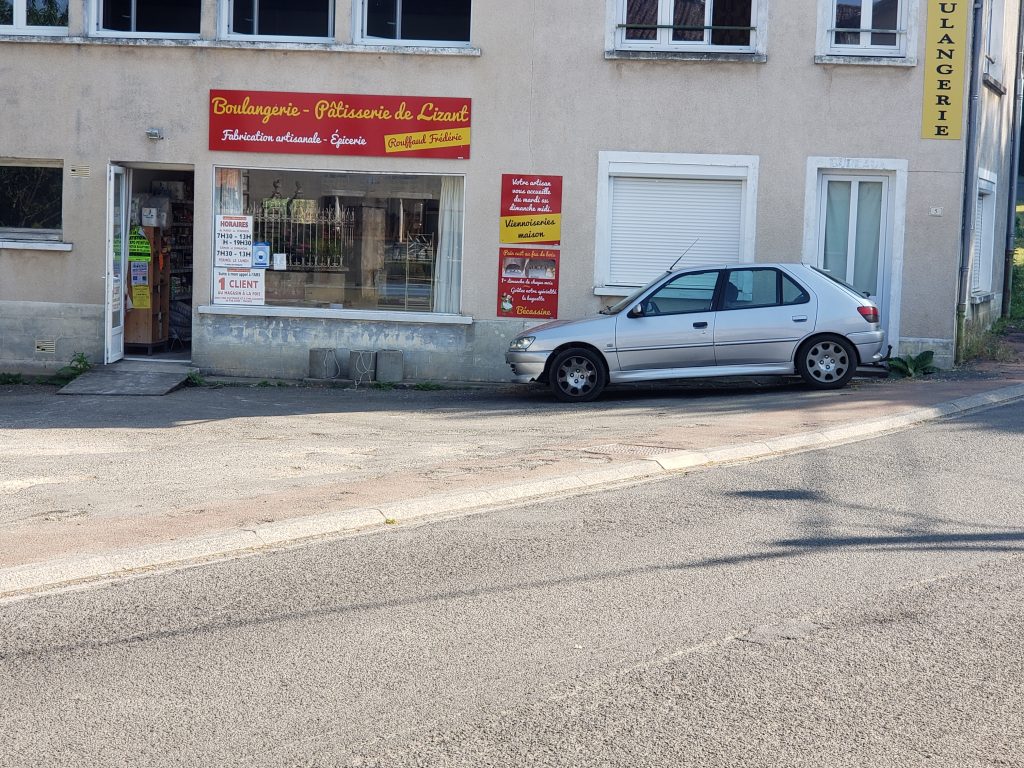
A menu from the Banquet du Chasse yesterday. Lots of food.
BONJOUR!
Sorry for my extended absence. La grippe can be a harsh taskmaster. Anyway, this is about some things you may miss if you visit, or move to, France.
- Good Mexican (Tex-Mex anyway) food. French food is undeniable fine, but the French never have come to appreciate the tang of a chili. They do have chilis, of course, but they all seem to be the mild variety. I grew up in a household like that: Mom thought that pepperoni was “too hot to eat” so we never ate it, or anything like it. Same with the French, although they do use Spanish chorizo on pizza.
- Pepperoni. You might think that pepperoni is a basic Italian sausage, but it isn’t. In fact, pepperoni was invented by Italian immigrants in New York City. Yes, the most iconic pizza topping of them all is absent from French pizzarias, even though the pizza is, in general, pretty good.
- Mac and Cheese. They do sell the stuff in boxes, but it ain’t Kraft, buddy. Not even close. Of course, you don’t have to miss Mac and Cheese if you learn to make your own, which, in fact, is pretty easy. Still, Kraft we don’t have. Sorry.
- Hershey’s chocolate. It seems that people who didn’t grow up with Hershey’s chocolate tend not to like it, probably because it’s made with a different process from other chocolate products, a process that turns the milk ever so slightly, which is why Hershey’s tastes uniquely like Hershey’s. This extends to chocolate syrup for ice cream, where everyone “knows” that Hershey’s is the best of the lot. Oh, well.
- Grabbing a quick lunch outside of fast food. Eating in France is an experience all its own. That banquet that we attended provided us with four hours of sequentially presented EIGHT courses! Yoiks! A “quick” lunch will run you about an hour, and many people take two, right out of their work day, to enjoy a leisurely lunch. Of course, if you go to Mickey Ds (McDo) you order from the screen and can leave as soon as you snarf down your food. Question is, for most of us most of the time, why do that? France is the second most popular country for McDonalds, by the way. Also the second biggest consumer of pizza per capita.
Some things you won’t have to miss include Snickers bars, Ben & Jerry’s, Hagen-Daszs, potato chips (not crisps, it says chips right on the bag), pretzels, burgers, hot dogs, pizza of course (Italian style, cooked hot and fast), paper towels, automobiles, freeways, toll roads, DIY stores (Bricos), supermarkets (even hypermarkets), movies (they always have showings of “VO” or version originale, with French subtitles of American films. You can ignore the subtitles.) And there’s more. The similarities, in fact, outweigh the differences.
I’ll do my best not to get the flu again, so I hope you’ll read on in my next post!
AU REVOIR
